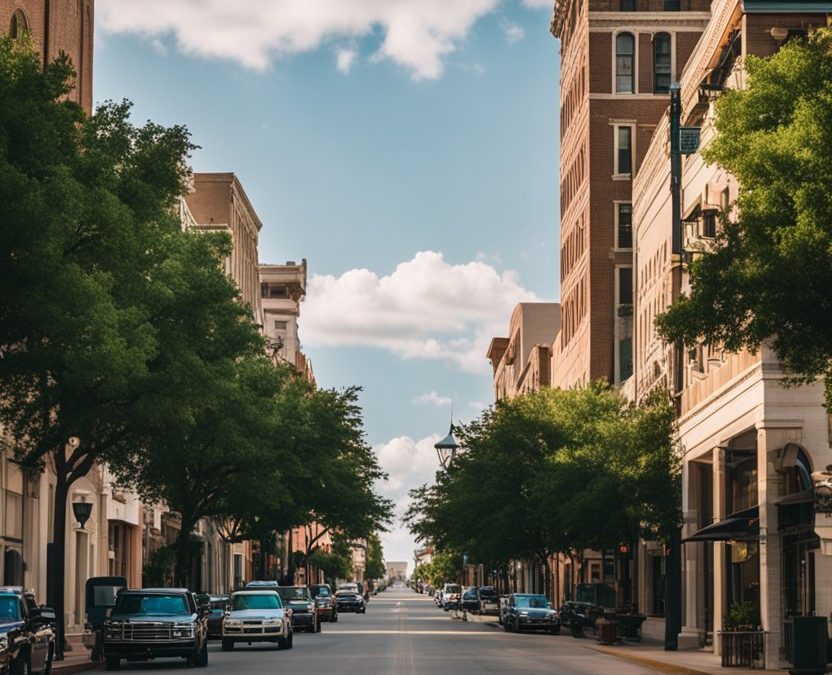Having lived in Waco for years, I’ve witnessed the city’s growth. Explore the changes, including the history of mid-scale hotels in Waco. One of the most noticeable changes has been the rise of mid-scale hotels in the area. These hotels have become a popular choice for travelers who want a comfortable and affordable place to stay while they explore all that Waco has to offer.
When you think of mid-scale hotels, you might picture a generic chain hotel with no personality or charm. However, the mid-scale hotels in Waco are anything but generic. Many of these hotels are housed in historic buildings that have been carefully restored and renovated to provide modern amenities while still retaining their original character. For example, the recently opened Hotel 1928 is located in a building that was originally commissioned by the Waco Shriners and designed in a Spanish Revival style by Dallas architects. The hotel has been beautifully restored and now offers guests a unique and luxurious experience that celebrates the history of the building and the city.
The history of mid-scale hotels in Waco is a fascinating one that reflects the growth and development of the city over the past century. From the early days of the Grand Karem Shrine Building, which served as a space for the Freemason-affiliated Karem Shriners to host events, to the modern and stylish hotels that now dot the city, mid-scale hotels have played an important role in the history of Waco.
Evolution of Mid-scale Hotels in Waco
As a friendly overview of the evolution of mid-scale hotels in Waco, I will discuss the early 20th century beginnings, the boom of the 1920s, and the impact of the Great Depression.

Early 20th Century Beginnings
At the turn of the 20th century, Waco was a growing city with a booming economy. The railroad brought travelers to the city, and the Brazos River provided a source of transportation and commerce. The Roosevelt Hotel, built in 1911, was one of the first mid-scale hotels in Waco. It was a luxurious hotel that catered to the wealthy travelers who came to the city.
The Boom of the 1920s
The 1920s brought a boom to the hotel industry in Waco. The McClelland Hotel, built in 1929, was a grand hotel that catered to the wealthy travelers who came to the city. It was a luxurious hotel that featured a ballroom, a rooftop garden, and a swimming pool. The hotel was a popular spot for social events and was often used for weddings and other celebrations.
Impact of the Great Depression
The Great Depression had a significant impact on the hotel industry in Waco. Many hotels were forced to close their doors due to the economic downturn. The Roosevelt Hotel, which had been a symbol of luxury and prosperity, was forced to sell to local investors. The new owners left the original style of the hotel largely intact, changing only the name.
Despite challenges, Waco’s mid-scale hotels evolved due to the 1920s boom, Great Depression impact, and city growth. They persist as a comfortable, affordable choice for travelers.
Architectural Significance & Design: Mid-Scale Hotels in Waco History
As a historian of mid-scale hotels in Waco, I find the architectural significance and design of these buildings to be fascinating. Builders constructed many of these hotels in the early 20th century, each with unique stories and styles reflecting the time period and culture of Waco.

Iconic Buildings and Their Stories
Architect Herbert M. Greene designed and constructed the iconic mid-scale ALICO Building in Waco in 1910. Originally serving as the Amicable Life Insurance Company (ALICO) headquarters, this historic structure now houses a hotel, convention center, and office space. Recognized for its early 20th-century architecture, the ALICO Building is listed on the National Register of Historic Places.
Another notable mid-scale hotel in Waco is Hotel 1928. The Karem Shriners originally constructed this historic building in 1928.After years of neglect, Chip and Joanna Gaines purchased the building and restored it to its former glory. The hotel now features a Brasserie restaurant and 53 guest rooms that reflect the building’s Jazz Age origins.
Restoration and Preservation Efforts
Many mid-scale hotels in Waco have undergone restoration and preservation efforts over the years. ALICO Building’s $50M ’90s renovation preserved history, added modern amenities, earning a Building Permit of Merit from Texas Society of Architects.
Chip and Joanna Gaines purchased Hotel 1928 and spearheaded a major restoration effort. The restoration efforts focused on preserving the building’s historic features while also adding modern amenities and design elements. The result is a hotel that seamlessly blends the past and present.
Waco’s mid-scale hotels, like the historic ALICO Building and the newly restored Hotel 1928, embody the city’s rich history and culture. These architectural gems seamlessly blend the past with modern amenities, offering guests a unique glimpse into Waco’s heritage.
Contemporary Trends and Cultural Influence: Mid-scale Hotels in Waco’s Past
As Waco has grown in popularity, so has the demand for modern and boutique hotels. These hotels offer a unique experience for visitors, and they have a significant cultural impact on the community. In this section, I will discuss the influence of Magnolia and other contemporary boutique hotels on Waco’s hospitality industry.

The Magnolia Influence: Mid-Scale Hotels in Waco History
The Magnolia empire, founded by Chip and Joanna Gaines, has had a significant impact on Waco’s tourism industry. The couple’s Magnolia Market and Network are Waco cultural staples, drawing thousands of visitors annually.
The Gaineses have also expanded into the hospitality industry, opening their boutique hotel, Hotel 1928, in downtown Waco. The hotel’s design reflects the building’s Jazz Age origins, and its furnishings pay homage to the city’s rich history. The Gaineses’ attention to detail and commitment to preserving Waco’s past has made Hotel 1928 a popular destination for visitors.
Contemporary Boutique Hotels: Mid-Scale Hotels in Waco History
In addition to Hotel 1928, Waco has seen a rise in contemporary boutique hotels. These hotels offer a unique experience for visitors, with their modern design and personalized service. They greatly influence the community by partnering with local businesses and promoting the city’s cultural offerings.
One such hotel is the Indigo Hotel, located in the heart of downtown Waco. The hotel’s design features local artwork and a rooftop bar with stunning views of the city. The hotel also partners with local businesses to offer guests an authentic Waco experience.
Another boutique hotel in Waco is the Hotel Indigo, located in the historic Brazos Riverfront district. The hotel’s design pays homage to Waco’s past, with its exposed brick walls and industrial-chic decor. The hotel’s restaurant, Brazos Bar & Bistro, offers a farm-to-table dining experience with locally sourced ingredients.
The emergence of modern and boutique hotels in Waco, along with the history of mid-scale hotels, has significantly influenced the city’s hospitality sector and cultural landscape. These hotels offer visitors a unique experience and contribute to promoting the city’s rich history and local businesses.

